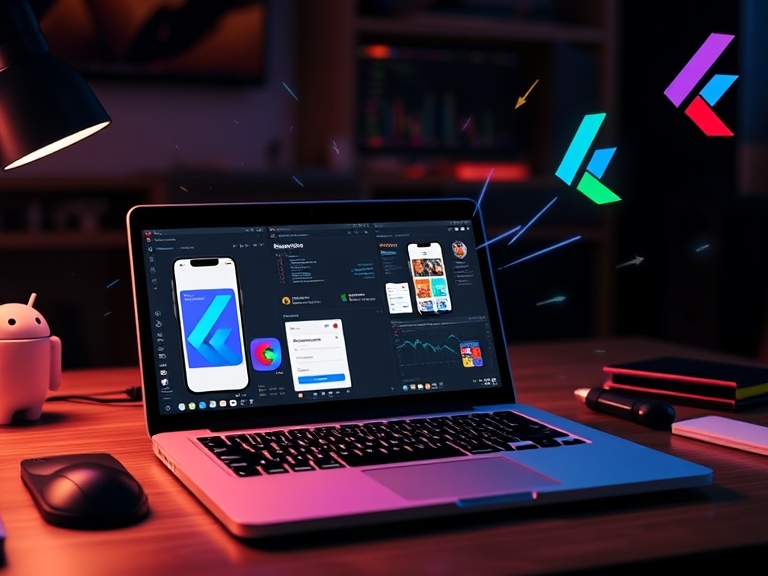 Newsletter Copywriting – Emails That Convert, Not Bore!
Newsletter Copywriting – Emails That Convert, Not Bore!
Avoiding UI Inconsistencies Across Devices in Flutter
Written by Noor » Updated on: June 17th, 2025

Why UI Consistency Matters More Than Ever
When users open your app, they don’t care what device they're using — they just expect everything to look and work perfectly. That’s why Flutter responsive design is more than a buzzword—it’s the backbone of building experiences that adapt seamlessly across phones, tablets, and even desktops.
However, achieving this harmony isn’t always as simple as it sounds. In real-world Flutter projects, developers often face visual bugs, misaligned widgets, and text overflow issues across different screen sizes. If your UI breaks on certain devices, you risk losing user trust—and worse, engagement.
So, how do you ensure your Flutter UI looks stunning and consistent no matter where it’s viewed? Let’s dive in.
Common UI Challenges in Flutter (And How to Fix Them)
1. Hardcoded Dimensions and Pixel Values
One of the most common mistakes is using fixed pixel values (height: 300, fontSize: 18, etc.) instead of making designs adaptive.
Solution: Use MediaQuery, LayoutBuilder, or packages like flutter_screenutil or responsive_builder. These tools help adapt widget sizes dynamically based on screen dimensions.
2. Improper Use of Aspect Ratios
Ignoring aspect ratios can result in stretched or squished elements, especially when switching between portrait and landscape modes.
Solution: Use AspectRatio widgets where necessary and maintain consistent width-to-height relationships for key UI components.
3. Text Overflow and Font Scaling
Text that fits well on one device may overflow or wrap awkwardly on another.
Solution: Use FittedBox, AutoSizeText, or implement TextScaleFactor logic to handle accessibility scaling preferences. This ensures your typography adapts without compromising layout.
Best Practices for Scalable, Beautiful UIs
Use Flexible Layouts: Employ Expanded, Flexible, and Spacer widgets wisely. These help manage space intelligently as the screen size changes.
Grid & ListView Responsiveness: Ensure your item counts and column spans adjust in GridView or ListView based on screen size. Use SliverGridDelegateWithFixedCrossAxisCount or MaxCrossAxisExtent.
Custom Breakpoints: Define custom breakpoints to change layout elements (like changing a single-column layout into a two-column one on tablets).
Test on Emulators and Real Devices: A layout that works on an emulator doesn’t guarantee success on physical devices. Always test your UI on various screen types and OS versions.
Tools That Can Help
Device Preview: Simulate different screen sizes within your IDE.
Flutter Inspector: Check widget hierarchies and debug layout issues visually.
Responsive Framework Plugin: Helps manage breakpoints and fluid UI transitions.
Why Choosing the Right Team Makes All the Difference
UI consistency isn’t just about widgets—it’s about development experience. A trusted flutter app development company like Four Strokes Digital understands the nuances of layout design, responsive architecture, and how to scale visuals across screen types. They don’t just write code—they craft interfaces users love to interact with, regardless of device.
Sure, you could use a react native mobile app framework or other platforms for cross-device development, but Flutter stands out with its pixel-perfect rendering engine. It gives you more control over visuals, animation, and transitions—which is critical when you're aiming for a unified experience across devices.
And with the rise of Flutter Mobile Apps across industries like fintech, healthcare, and retail, responsive design has become an essential rather than a luxury.
Final Thoughts
Flutter gives you the tools to create gorgeous, responsive UIs—but only if you use them thoughtfully. Don’t wait for users to complain about misaligned buttons or unreadable text. Plan for Flutter responsive design from the beginning, test on all screen sizes, and apply scalable, flexible layouts throughout your app.
A small adjustment today can prevent a cascade of UI issues tomorrow.
Note: IndiBlogHub features both user-submitted and editorial content. We do not verify third-party contributions. Read our Disclaimer and Privacy Policyfor details.
Copyright © 2019-2025 IndiBlogHub.com. All rights reserved. Hosted on DigitalOcean for fast, reliable performance.

















